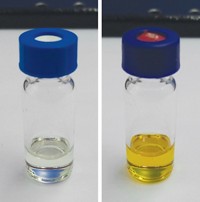Advertisement
Grab your lab coat. Let's get started
Welcome!
Welcome!
Create an account below to get 6 C&EN articles per month, receive newsletters and more - all free.
It seems this is your first time logging in online. Please enter the following information to continue.
As an ACS member you automatically get access to this site. All we need is few more details to create your reading experience.
Not you? Sign in with a different account.
Not you? Sign in with a different account.
ERROR 1
ERROR 1
ERROR 2
ERROR 2
ERROR 2
ERROR 2
ERROR 2
Password and Confirm password must match.
If you have an ACS member number, please enter it here so we can link this account to your membership. (optional)
ERROR 2
ACS values your privacy. By submitting your information, you are gaining access to C&EN and subscribing to our weekly newsletter. We use the information you provide to make your reading experience better, and we will never sell your data to third party members.
Environment
Biobased Lactic Acid Gets A Tad Greener
Chemical engineers develop a process to take waste glycerol from biodiesel production and make the key chemical intermediate
by Stephen K. Ritter
January 5, 2015
| A version of this story appeared in
Volume 93, Issue 1

Producing diesel fuel from vegetable oil has been a boon to the transportation fuel industry. A drawback is that glycerol is left over after the conversion of triglycerides in the oil to the fatty acid methyl esters that make up the fuel. Researchers have been on the lookout for ways to use the now abundant glycerol, which does not burn well itself and is usually treated as waste. Using a life-cycle analysis approach, a team led by Cecilia Mondelli, Stavros Papadokonstantakis, and Javier Pérez-Ramírez of ETH Zurich has demonstrated the viability of a tandem bio- and chemocatalytic process to convert glycerol into lactic acid, an important chemical intermediate used to make other building block compounds and to make biodegradable polylactic acid (Energy Environ. Sci. 2014, DOI: 10.1039/c4ee03352c). Biobased lactic acid is typically made from sugar by a fermentation process. The new approach includes an enzymatic conversion of glycerol to dihydroxyacetone followed by a chemical step using a tin-based microporous zeolite catalyst to isomerize dihydroxyacetone to lactic acid. The method produces less CO2 and requires less energy than the traditional process and could help improve the economics of both biodiesel and polylactic acid production, the researchers note.





Join the conversation
Contact the reporter
Submit a Letter to the Editor for publication
Engage with us on Twitter